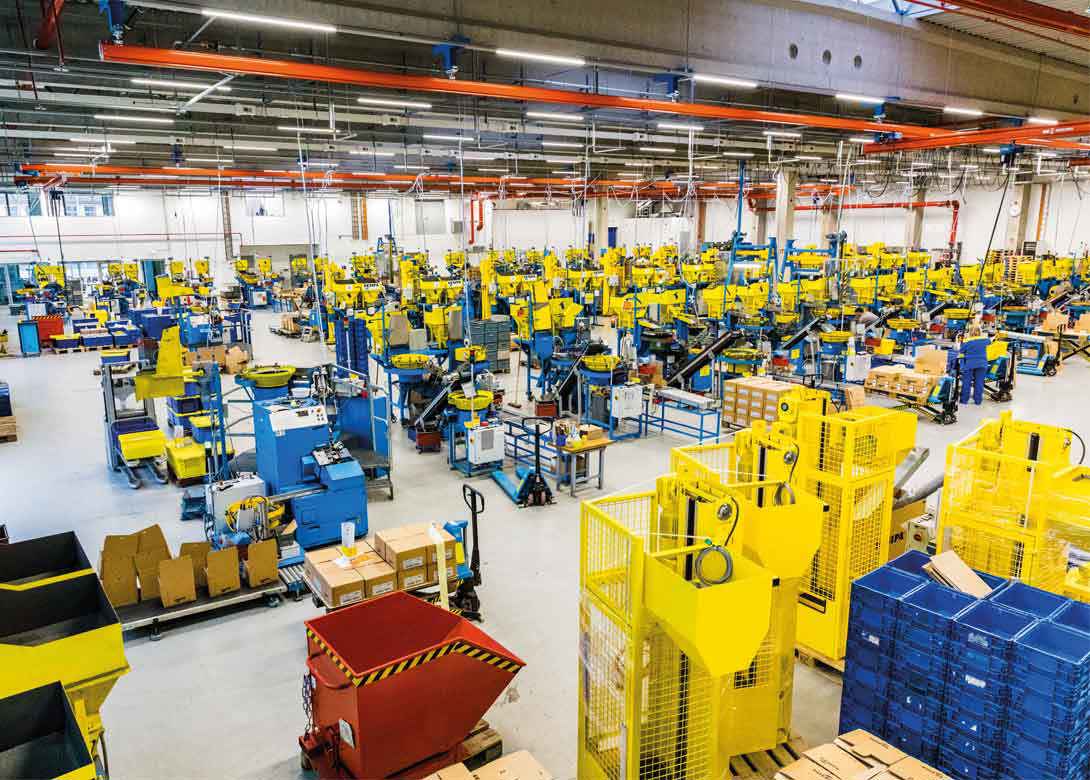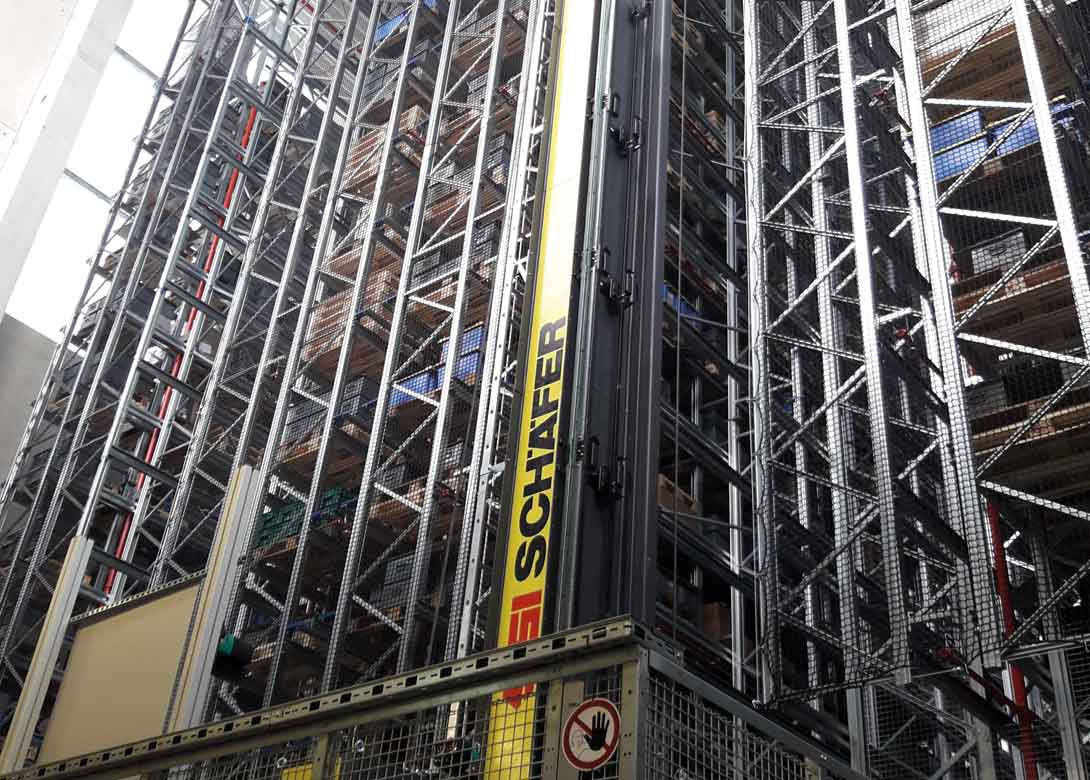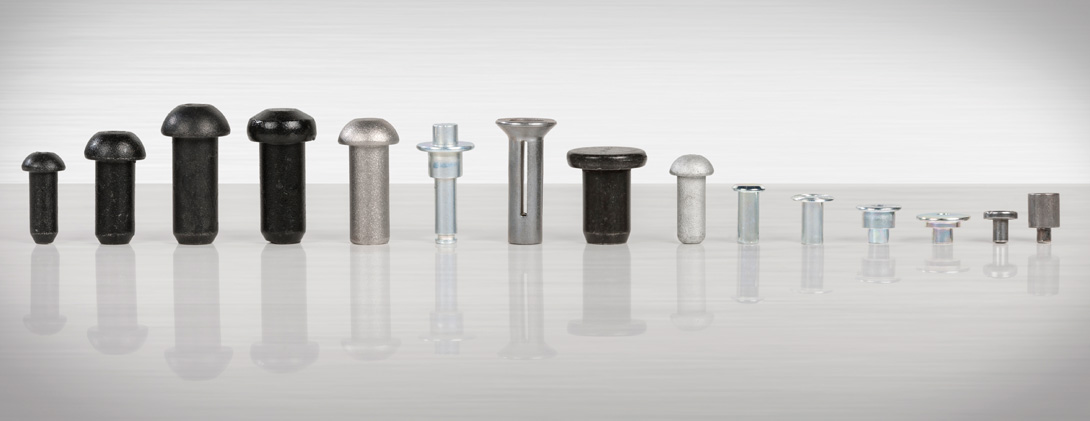

The last time Fastener + Fixing Magazine visited GESIPA® was in November 2017, when the company was at the beginning of its ‘Evotion’ project. Editor Will Lowry once again visited the Thal site to see the benefits of this investment now it is complete.
Launched in 2016, GESIPA®’s ‘Evotion’ project – combining the terms ‘evolution’ and ‘motion’ – involved a €15 million investment in an automated warehouse with 15,700 pallet spaces, as well as the addition of an extra production hall, which would enable GESIPA to bring together the complete blind rivet production at its Thal site.
“It was the biggest construction project in the company’s history and saw us double the production floor,” states Michael Hacker, plant manager at GESIPA. “Plus, we added a new automatic 22m high bay warehouse to create further space for stock. Once the buildings were ready, we then had to install the new machinery, as well as the machinery from other plants, which we managed to do by the end of 2018.”
Having successfully installed all the machines, the next step for GESIPA was to work on the new structure and strategy of the plant going forward. “I joined the business in May 2018, as we were halfway through the process of installing the new machines, and we analysed the production processes and improved the efficiency of the overall production,” mentions Michael.
“For instance, the original plan was for there to be one area for eyelets, one for mandrels, and one for the completion of the blind rivets. However, we changed it so that we now have a ‘double hall’ philosophy. This is where each hall runs independently and focuses on eyelets, mandrels, and completion. This means if something happens in one hall, we are always able to carry on with our production.”
Automated storage capabilities
In addition to the extra production space, GESIPA also benefited hugely from the automated warehouse. “Normally automated warehouses are associated with distributors rather than manufacturers, but we have found it to be a big positive for us as a business,” explains Michael. “The first, and most obvious benefit, is we are much faster in sending out complete orders, as the system knows where everything is and can quickly pick it for delivery. In addition, we are able to stock raw material in the warehouse and use it to quickly and effectively get the material to the right machines. The software system knows when we are running out of material and can ensure the material arrives from the warehouse to the machine, so there is no delay in production.”
The automated warehouse features two entry and exit points at either end, so each production hall has its own access – once again speeding up the process. Finally, a ‘chaotic’ storage system ensures the most popular products are at either end of the warehouse and less popular products in the middle, to once again optimise the picking process.

Full system connectivity
A crucial part of the manufacturing operation, and the automated warehouse, is the software system behind it. “We are producing 2,500 products, which means we need a good system to manage all the variables. That is why we use SAP,” states Michael. “For instance, by using SAP software we are able to plan and schedule different products (eyelets and mandrels) to ensure they are both ready to be assembled at the same time.”
Michael continues: “The new system was introduced at the beginning of 2017, but we have been using a SAP system since 2002. Therefore, we were aware of some of the capabilities and features it could offer. We are now fully integrated, and we have a lot more possibilities open to us on the new the system. Another advantage of the new software is all the different parts of the organisation can communicate with each other – almost all sites worldwide are connected. This means we can see what products are in stock at different locations and the system also guarantees the same commitment to quality, regardless of the products or where they are produced.”
Employee growth
One of the main challenges of doubling its production space was GESIPA also needed to increase its number of employees. “To ensure we kept the high-quality standards that we are known for within the industry, we needed to add new employees and train them on how to use the machines and, more importantly, how to guarantee the quality we demand.”
To do this some of GESIPA’s employees from its other production site in Walldorf moved to Thal to work on the machines and help train up the new employees. “The new hall included a lot of machines from the Walldorf site, so having the people from Walldorf made a lot of sense,” comments Michael. “It also showed the commitment and family spirit within the business that these employees were willing to do this.”
In addition, GESIPA also introduced a new training academy in 2018 where it could train its new employees. “We had to attract people that were not from our industry sector, so by introducing the training academy we could train them exactly to our requirements. It is also difficult to attract young people and qualified people, so we needed to be able offer them the necessary training ourselves,” points out Michael.
The training academy includes a small tool shop for new employees to learn the basics, such as turning, milling and hand working, as well as maintenance set-up. For the more complex training, the academy includes similar machines as in production, so the new employees can learn on like for like machinery. After a few weeks they can then move to the production floor, once they have proven they understand the processes.
In addition to new employees, GESIPA is also using the academy to train groups of apprentices. “Alongside a standard apprenticeship we also do a ‘Studying with GESIPA’, which is a combination of an apprenticeship with us, as well as studying at university,” points out Michael. “Last year we had two apprentices and this year we had six starting with us, which is a sign the academy is proving a success.”
One plant, one technology
With the ‘Evotion’ project now complete, the Thal plant fulfils all the blind rivet needs for GESIPA to worldwide customers. “We are now fully focused on standard and special blind rivets and we have all the knowledge and experience within the business,” concludes Michael. “Having this knowledge and experience of blind rivets in one location is a big benefit, as it enables us to concentrate on the core competences. As a manufacturer in Germany it is vital to get attractive product costs, by enhancing your processes as much as possible. Thanks to the ‘Evotion’ project we are now in a position to do this and provide a highly optimised production level to all our customers.”


Will joined Fastener + Fixing Magazine in 2007 and over the last 15 years has experienced every facet of the fastener sector - interviewing key figures within the industry and visiting leading companies and exhibitions around the globe.
Will manages the content strategy across all platforms and is the guardian for the high editorial standards that the Magazine is renowned.
Don't have an account? Sign Up
Signing up to Fastener + Fixing Magazine enables you to manage your account details.